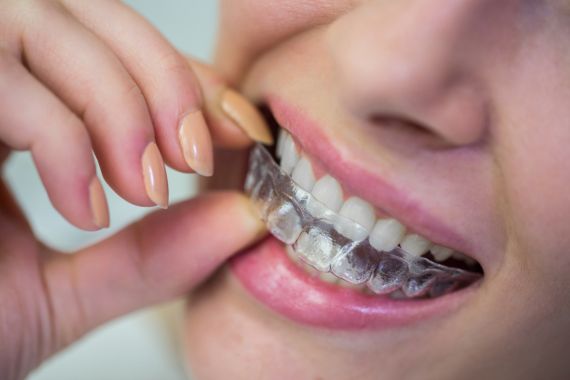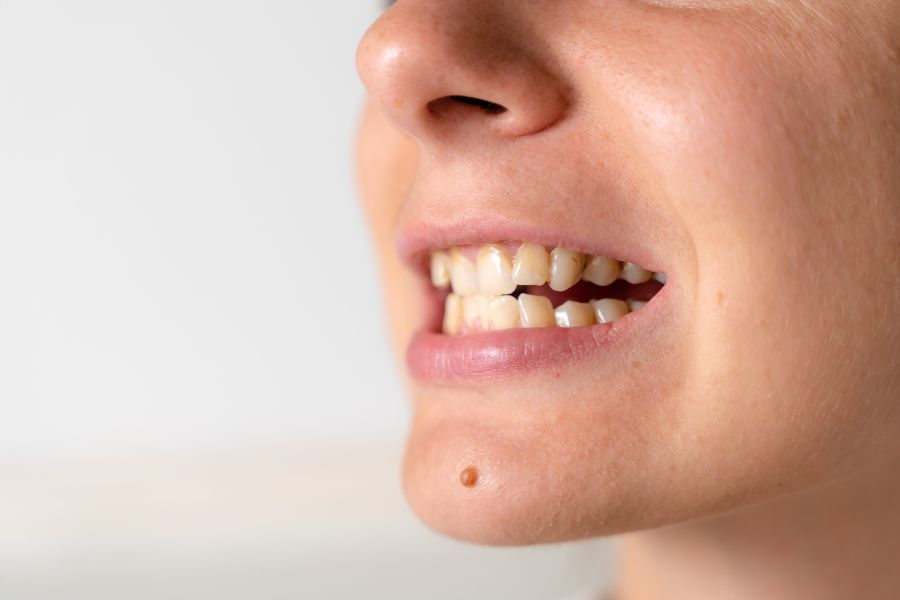Genetics
Oral Habits
Prolonged thumb sucking, tongue thrusting, or prolonged use of pacifiers can contribute to bite and jaw misalignment issues in children.
Dental Problems
Untreated dental issues, such as tooth decay, gum disease, or premature tooth loss, can cause teeth to shift and lead to misalignment problems.
Overbite
An overbite occurs when the upper front teeth excessively overlap the lower front teeth. This type of misalignment can cause speech difficulties, jaw pain, and uneven tooth wear.
Underbite
Crossbite
A crossbite occurs when one or more upper teeth bite down on the inside of the lower teeth, causing an uneven wear pattern and potential jaw pain.
Open Bite
Deep Bite
A deep bite occurs when the upper front teeth significantly overlap the lower front teeth, causing excessive wear and potential jaw pain.
Edge-to-Edge Bite
An edge-to-edge bite occurs when the upper and lower front teeth come into contact with each other edge to edge, rather than having a slight overlap. This type of bite can lead to excessive tooth wear and may cause discomfort or pain in the jaw joint.
Spacing Issues
Spacing issues refer to gaps or spaces between teeth, which can be caused by missing teeth, undersized teeth, or a discrepancy between the size of the jaw and teeth. These gaps can lead to food trapping and an increased risk of gum disease or tooth decay.
With the addition of these two types of bites, the blog post now covers eight common types of bite and misaligned jaw issues. This expanded discussion provides a more comprehensive understanding of various dental alignment concerns and helps readers make informed decisions about their oral health care.
Read more on Malocclusion of teeth: MedlinePlus Medical Encyclopedia
Misaligned Jaw
Orthodontic Treatment
Orthodontic treatments, such as braces or clear aligners, can help correct bite and jaw misalignment by gradually moving the teeth into the desired position.
Oral Appliances
Oral appliances, such as retainers or palatal expanders, can be used in conjunction with orthodontic treatment to help correct bite and jaw misalignment issues.
Dental Restorations
Dental restorations, such as crowns, bridges, or veneers, can help improve the appearance and function of misaligned teeth.
Oral Surgery

How Clear Aligners Work
Benefits of Clear Aligners
Suitability for Malocclusion Treatment
Early Orthodontic Evaluation
Encourage Healthy Oral Habits
Discourage Harmful Oral Habits

Consult with an Orthodontist or Dentist
Consider Your Lifestyle
When choosing a teeth straightening option, consider your lifestyle and personal preferences. Clear aligners, like those offered by Alignerco, may be a more discreet and convenient choice for adults.
Weigh the Pros and Cons
Each teeth straightening option has its advantages and disadvantages. Weigh the pros and cons of each option, considering factors such as treatment duration, cost, and maintenance requirements, to make an informed decision. Read more on Popular Treatments for Misaligned Jaws and Teeth and Bite Correction

